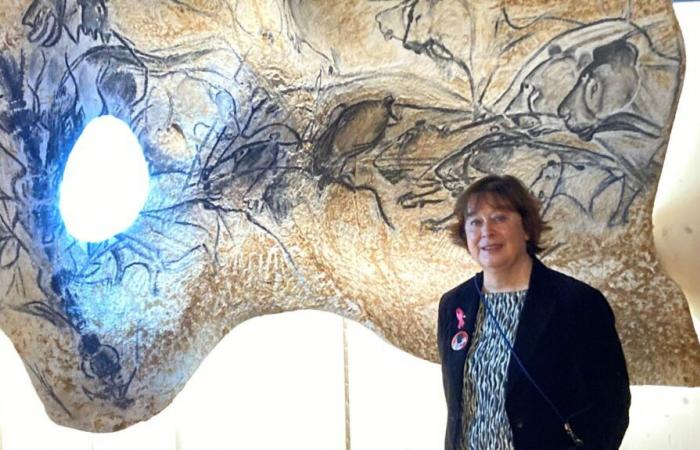In 1997, Carole Fritz fell in love. The year she first entered Chauvet Cave, the oldest decorated cave in the world (its frescoes dating back to 36,000 BCE), discovered on December 18, 1994 in Vallon-Pont-d’Arc ( Ardèche) by three speleologists: Éliette Brunel, Jean-Marie Chauvet and Christian Hillaire. She tells us about this love at first sight as part of the exhibition Chauvet Cave, the scientific adventure presented until May 11, 2025, at the Cité des sciences et de l’industrie in Paris.
Director of research at the CNRS, the archaeologist has been responsible since 2018 for the multidisciplinary team authorized to descend for only four weeks per year (except in this anniversary year, a shame) into the cavity classified as a World Heritage Site by the Unesco in 2014. To carry out the investigation, these experts are not allowed to search or even touch the walls. They never leave the narrow metal walkways set up on the ground. We interviewed Carole Fritz at the foot of an exact reproduction of a painting from the cave.
Franceinfo Culture: What did you feel the very first time you set foot in the Chauvet cave?
Carole Fritz : It’s unforgettable. At that time, in 1997, there was no development, so we arrived through the ceiling, with a caving ladder, after 10 meters of descent. It was the space that impressed me and then, as we progressed, the beauty of the box, if I may say so. Its calcite, orange soils. As the cave is preserved, it was absolutely fabulous.
Is it like a sanctuary?
For me, yes. It’s a box and inside you have the jewel. We pass in front of the red panels then an area which is the threshold where you have to crouch to exit into the second part of the cave. We arrive in a room where there are lots of engravings, then in front of the panel of horses and there, I had an extremely strong emotion. This had only happened to me twice in my life before, under the ceiling of the Sistine Chapel in Rome and in another cave called Altamira in Spain. The first time I saw the Chauvet panels, I had the impression that I was being told things. I had never experienced this in a cave before. We are faced with stories that build society.
What does this exhibition represent for you?
For me, as for the whole team, this exhibition is fabulous. This is the first time that we have highlighted the scientific study of a cave by an interdisciplinary team. We really work together with the help of 3D images. We work on the same media and then we merge the information and data. The interest of this exhibition is to show how we interact in this cave. We study the designs which are fabulous, but it’s not just that. Above all, we try to understand human behavior in the cavity. It’s like we’re at a crime scene somewhere, except we don’t have a body. We try to see all the clues that will allow us to understand human and animal behavior and the interaction between the two.
In December, we will celebrate the 30th anniversary of its discovery. Has your view of the cave changed?
Yes and I also look at Paleolithic art differently. Chauvet completely changed the perception of everyone on the team. This cave, we always have an emotion when we go inside. We have the impression, even if it is false, of being so close to these humans who made the drawings that we always want to go further to understand them. More than 38,000 years separate us from them and even if we are all Homo sapiens, we are not the same! We are not the same mentally, we do not have at all the same vision of the world as them, it is very complicated to study such distant societies with our minds today. Sometimes you have to put aside what you think to look for other things. Forget certainties.
What allows us to say that these frescoes are not accumulations of images, but real compositions?
Each drawing responds to the other. In some places, we see that we left room to put another one. There is a predetermination of the implementation. We realize that the wall supports the image, but that it is also pictorial material. They mixed the charcoal with the white of the walls or with clay to make whites, grays, bistres, to give volumes. They use the volume of the wall thanks to fire. You need wood to light these fires, you have to maintain them, because if they go out, you don’t come out of the cave, you are in total darkness. Creating these paintings therefore involves the whole group, especially since it is the myths, the symbolic thought of all these individuals which appear on the walls. We try to reconstruct gestures, sounds, perceptions. We still have plenty of things to do. In Chauvet, we pull a thread and 50,000 come. And after us, other researchers will come.
Will we be able to see this exhibition in Ardèche?
Quite. It will be inaugurated there, in Vallon-Pont-d’Arc, on July 1, 2025. People who will visit Chauvet 2 [la réplique de la grotte] will be able to understand how we work in the cavity.






